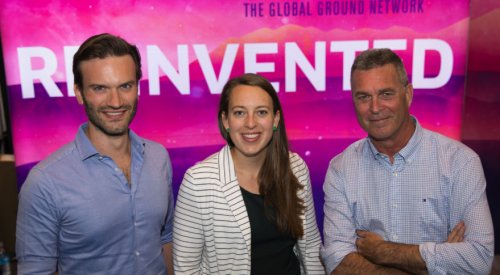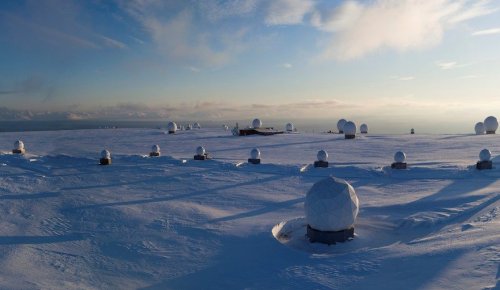LOGAN, Utah — Hiber, a Dutch startup developing an Internet of Things communications service for machine-to-machine applications, and Kongsberg Satellite Services (KSAT) of Norway formed a long-term partnership to create a ground station infrastructure for Hiber’s Low Power Global Area Network, called Hiberband, in a deal announced Aug. 8 at the Small Satellite Conference here.
Hiber plans to launch its first satellite, Hiber One, in October on an Indian Polar Satellite Launch Vehicle, and the twin Hiber Two in November on a SpaceX Falcon 9 rocket, Maarten Engelen, Hiber co-founder and chief technology officer, told SpaceNews.
More than 50 customers have signed up for Hiber’s pilot program, representing the industries it plans to serve, including asset management, precision agriculture and energy, Engelen said.
Hiber will transmit data messages to customers at least hourly, which means the company will need to launch approximately 36 cubesats, Engelen said. The company will expand its constellation to demand. When Hiber’s current pilot customers project their growth onto our network, “we are already at 60 probably 80 satellites to service that demand,” Engelen said.
On Aug. 8, Hiber installed its first ground station on the roof of its research and development center in Delft, the Netherlands. Hiber also plans to route customer communications through a ground station in Svalbard, Norway, operated by KSAT.
“Hiber is doing a good partner,” said Katherine Monson, U.S. business development director for KSAT, a Norwegian company. “They are focusing on their end customer. That is a good path to revenue.”
Hiber plans to transmit data messages for customers through 4.5 meter Cobham S-band antennas installed in Delft and Svalbard. The sites also will be equipped with UHF and VHF antennas for telemetry tracking and control, plus connection to Hiber Mission Control, Engelen said.
After conducting a thorough survey of the emerging Internet of Things (IoT) market, Hiber founders determined their success depends on offering customers with operations or assets in rural and remote areas an inexpensive communications service, Engelen said.
In addition to keeping subscription costs low, Hiber plans to offer customers devices that require very little power because they hibernate most of the time. “They wake up when a satellite is in view, acquire a broadcast signal, send off a message, recalculate when the next satellite will come over and then go to sleep again,” Engelen said.
Hiber worked with partners Innovative Solutions in Space and Hyperion Technologies, two Dutch companies, to design its payload and six-unit cubesat. “We are also working with them on future developments,” Engelen said. “The next generation of satellites will be an advanced cubesat system including propulsion.”
- Why Sierra Nevada’s owners are betting big on Dream Chaser
- LEO and MEO broadband constellations mega source of consternation
- Will ThinSats inspire the next generation of engineers and scientists?
- Telenor Satellite eyes even split between broadcast, connectivity businesses
- SpaceX takes top honors in SpaceNews Awards for Excellence & Innovation
Share with your friends


(0) Comments
This article comments are currently no :(